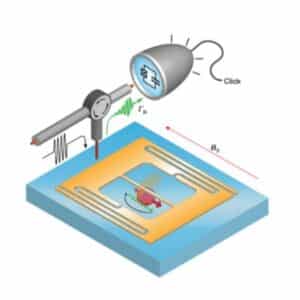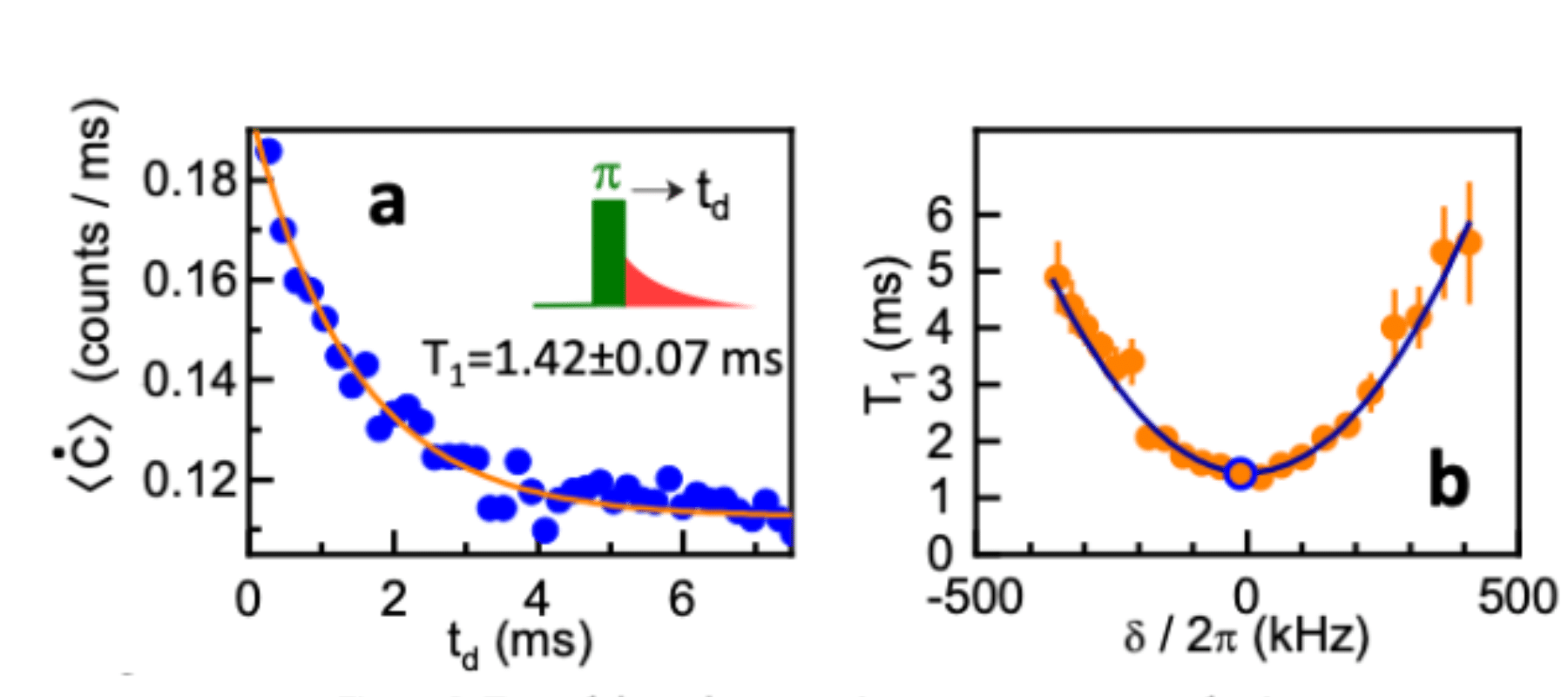Revolutionizing Single-Spin Detection with ESR Spectroscopy and Advanced Quantum Control
Electron Spin Resonance (ESR) spectroscopy is a powerful technique used to study the properties of unpaired electrons in paramagnetic materials. It provides information about the overall electronic structure and the local environment of certain atoms or molecules. Even though single-electron spin sensitivity has been reached, it is either limited to specific systems or to a small observation area. Finding a practical way to detect an individual electron’s spin has still been a challenge, until today. This is why we are excited to share with you the groundbreaking demonstration of an arbitrary single electrons spin detection method developed by Dr. Emmanuel Flurin’s group at CEA Paris-Saclay.
Shedding Light on Electron Spin Resonance
Let’s delve into the detection technique used by the team in Paris. First of all, the spectroscopy is performed by transposing fluorescence detection. What’s that? In optical fluorescence, an emitter is excited by a short light pulse, and the photon it emits during its radiative relaxation is then detected. In this specific case, the team at CEA excited a spin with a short microwave pulse instead, and detected its ‘jump’ by counting the photons it emits when returning to its ground state (figure 1). This process is known as spin relaxation. To detect the fluorescence photon, the team used a single-microwave photon detector (SMPD) based on a superconducting qubit – another great scientific breakthrough from the same team (link).

Figure 1: Principle of Single-Spin Spectroscopy
The isolated electron spin (red arrow) is firstly excited by a microwave pulse (black pulse), and then it relaxes, falling back to the ground state, emitting a microwave photon (green arrow), which is driven (green pulse) towards the photon counter (SMPD).
Speeding Up Quantum Experiments: Spin Qubits and OPX+
The SMPD is operated in cycles of 12.7 μs on average. Each cycle is composed of three steps: (1) the pumped conversion of an incoming photon into a qubit excitation, (2) the qubit readout, and (3) the conditional reset of the qubit to its ground state if it was detected excited. This reset consists of a cycle of one or several π-pulse(s) applied to the qubit until it is measured in its ground state (figure 2). Driving pulses and conditionally resetting qubit in a fast way is then the key factor for a successful experiment. To drive the pulses and perform all the cycle, the team at CEA Paris-Saclay relied on Quantum Machines’ OPX+, an ultra-fast processor-based quantum control solution. Unlike other quantum controllers, OPX+ is built around a multi-core Pulse Processing Unit (PPU) which was designed by Quantum Machines. The PPU combines classical calculation with quantum control pulses and control flow in real time instead of playing pulse sequences from memory like other controllers. These unique real-time capabilities of the OPX+ allowed the team at CEA to reduce conditional feedback to a few hundreds of nanoseconds and all while performing conditional feedback and readout. In fact, out of the 12.7 μs needed for the entire cycle, only 0.7 μs are spent for the conditional reset, and only 2 μs for the readout, a testament to the speed and cutting-edge capabilities of the OPX+.

Figure 2: Two of the coherence time measurements of spin
Left: Measured average count rate as a function of delay time after a π excitation pulse in order to determine the relaxation time T1. Right: T1 measured as a function of spin resonator frequency (Purecell Effect)
All the above-mentioned features and capabilities are now brought to scale, with Quantum Machines’ brand new OPX1000, the best performing, agile and scaled-up quantum controller on the market.

“I’m very happy with QM’s Quantum Orchestration Platform (QOP). It’s the single most reliable piece of equipment I’ve got in the lab. I operated it remotely and never had any problems. I strongly recommend the OPX and the QOP control solution from QM. It is by far the simplest way to do qubit physics.”
Dr. Emmanuel Flurin | Cea Saclay, Quantronics Group
Quantum Leap: How ESR Spectroscopy Enhances Quantum Computing
How can this method find applications in quantum computing? Well, Electron Spin Resonance (ESR) spectroscopy is incredibly useful for the characterization and manipulation of spin qubits, which are a key component of a quantum computer. By finely tuning the frequency and power of the applied magnetic field, one can induce transitions between spin states in a crystal, effectively “flipping” a qubit from one state to another, and identifying the unique energy levels corresponding to the spin states, having complete control over the qubits and the system.
We are ecstatic and proud to see this groundbreaking research enabled by the OPX platform, and kudos to the CEA group for the incredible lead in spin qubit research!